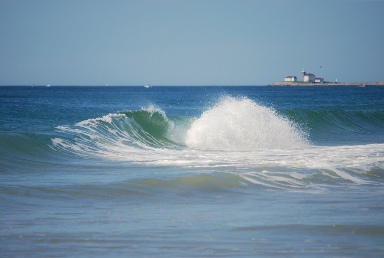Wednesday, October 14, 2020 8:00:52 AM
Chemoenzymatically synthesized sialyl glycans were quantitated utilizing DMB-HPLC analysis and were dissolved in 300 mM sodium phosphate buffer (pH 8.4) to a final concentration of 100 µM. ArrayIt SpotBot® Extreme was used for printing the sialoglycans on NHS-functionalized glass slides (PolyAn 3D-NHS slides from Automate Scientific; catalogue number-PO-10400401). Purified mouse anti-HMGB1 antibody (BioLegend; catalogue number-651402, Lot# B219634) and Cy3-conjugated goat anti-mouse IgG (Jackson ImmunoResearch; catalogue number-115-165-008) were used. Fresh HEPES buffer (20mM HEPES, 150mM NaCl ± 500µM ZnCl2) was prepared immediately before starting the microarray experiments.
Method described in (34) was adapted to perform the microarray experiment. Each glycan was printed in quadruplets. The temperature (20 °C) and humidity (70%) inside the ArrayIt[/b]® printing chamber was rigorously maintained during the printing process. The slides were left for drying for an additional 8 h. Printed glycan microarray slides were blocked with pre-warmed 0.05 M ethanolamine solution (in 0.1 M Tris-HCl, pH 9.0), washed with warm Milli-Q water, dried, and then fitted in a multi-well microarray hybridization cassette (ArrayIt, CA) to divide it into 8 subarrays. Each subarray well was treated with 400 µl of ovalbumin (1% w/v) dissolved in freshly prepared HEPES blocking buffer ± 500 µM of Zn2+ (pH adjusted for individual experiments) for 1h at ambient temperature in a humid chamber with gentle shaking. Subsequently, the blocking solution was discarded, and a solution of HMGB1 (40 µg/ml) in the same HEPES buffer (± Zn2+, defined pH) was added to the subarray. After incubating for 2 hours at room temperature with gentle shaking, the slides were extensively washed (first with PBS buffer with 0.1%Tween20 and then with only PBS, pH 7.4) to remove any non-specific binding. The subarray was further treated with a 1:500 dilution (in PBS) of Cy3-conjugated goat anti-mouse IgG (Fc specific) secondary antibody and then gently shaken for 1 hour in the dark, humid chamber followed by the same washing cycle described earlier. The developed glycan microarray slides were then dried and scanned with a Genepix 4000B (Molecular Devices Corp., Union City, CA) microarray scanner (at 532 nm). Data analysis was performed using the Genepix Pro 7.3 analysis software (Molecular Devices Corp., Union City, CA).
https://www.biorxiv.org/content/10.1101/2020.07.15.198010v1.full
VAYK Exited Caribbean Investments for $320,000 Profit • VAYK • Jun 27, 2024 9:00 AM
North Bay Resources Announces Successful Flotation Cell Test at Bishop Gold Mill, Inyo County, California • NBRI • Jun 27, 2024 9:00 AM
Branded Legacy, Inc. and Hemp Emu Announce Strategic Partnership to Enhance CBD Product Manufacturing • BLEG • Jun 27, 2024 8:30 AM
POET Wins "Best Optical AI Solution" in 2024 AI Breakthrough Awards Program • POET • Jun 26, 2024 10:09 AM
HealthLynked Promotes Bill Crupi to Chief Operating Officer • HLYK • Jun 26, 2024 8:00 AM
Bantec's Howco Short Term Department of Defense Contract Wins Will Exceed $1,100,000 for the current Quarter • BANT • Jun 25, 2024 10:00 AM










